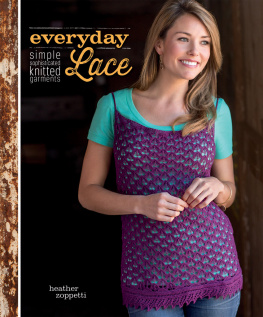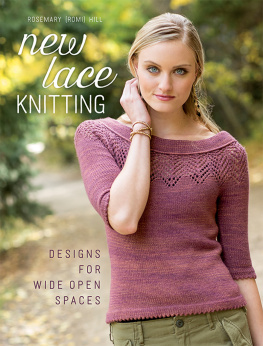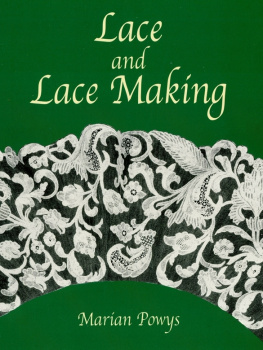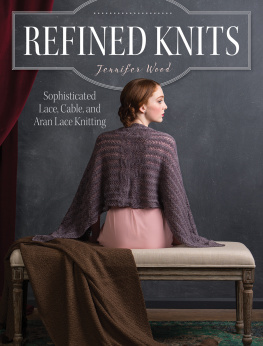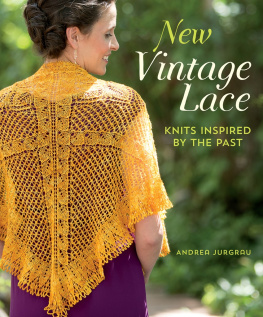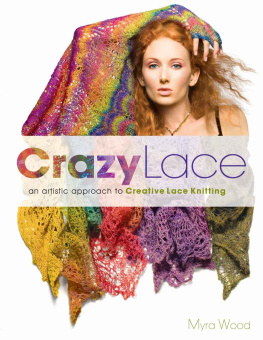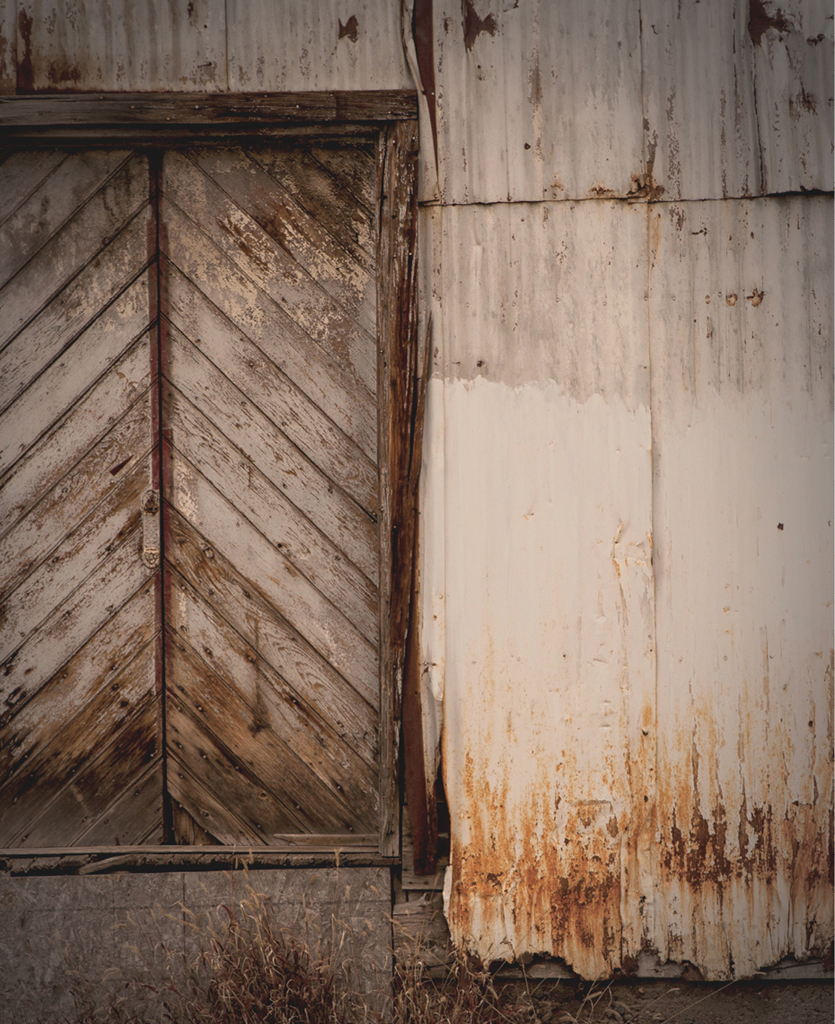Heather Zoppetti
CONTENTS
Introduction
In college, when the Internet was young and Ravelry didnt exist, I started knitting. Along with my roommate, I bought those I Cant Believe Im booklets, cheap yarn, and long aluminum needles. During episodes of Survivor, I taught myself to cast on, to knit, and to purl. From there my hobby turned into an obsession: I wanted to knit everything, and I was fearless. My first projects included a basketweave scarf, a lace baby blanket, and a pair of socks. I didnt have anyone to tell me that these things were difficult, so they werent.
As many do, I fell in love with lace at the very first stitch. I loved the way that just a few special stitches created breathtakingly beautiful patterns. It was only natural that I turned to lace when I started to design on my own. My popular Dahlia Cardigan (Interweave Knits, Fall 2011) celebrates my love of lace.
In recent years, lace shawls and lace-trimmed shawlettes have become wildly popular among knitters, especially those new to lace knitting. Although theyre fun and knit up relatively quickly, I find that I rarely wear them. To me, theyre a bit too fancy for everyday wear, and I pull them out only for special occasions or events where I know that my workmanship will be appreciated.
The projects in this book support my belief that lace should be liberated from its confinement to shawls and be incorporated into everyday garments and accessories. A bit of lacebe it a simple trim, a narrow panel, or an interesting edgingcan bring sophisticated femininity to a wardrobe without overwhelming fussiness. To this end, Ive relied on simple construction techniques that highlight the beauty of the lace patterns. The result is a collection of timeless classics that will hold their appeal year after year.
This book is divided into three sections based on the seasonswarm, transitional, and cold. Garments in the warm section include delicate knitted lace thats light and airy. The transitional section is filled with projects designed for the spring and fall months when simple layers and classic designs are most welcome. Thicker yarns, striking sweaters, and toasty accessories that focus on warmth and comfort complete the cold section. In short, you can enjoy a bit of lace every day of the year.
With knitters of all skill levels in mind, the projects in this book range from beginner to intermediate. The simplest patterns are a great introduction to lace knitting, and the more advanced projects will challenge experienced lace knitters. Wherever you fit in the spectrum, I hope that youll find projects youll want to knit and wear every day in Everyday Lace!
Chapter 1
Lace-Knitting Essentials
Lace is my favorite knitting techniqueI find lace patterns fun to design and fun to knit. Very simply, lace is created by yarnovers, which create intentional holes in the knitting. To help define the yarnovers and to maintain a constant stitch count (and therefore width of fabric), every yarnover is typically paired with some type of decrease. The sequence and type of yarnovers and decreases can create a wide array of patterns.
To make the most of your lace knitting, youll want to choose the right tools, become adept at reading charted patterns, and be diligent about blocking.
Tools
Although you can use the same tools that you use for general knitting, youll find things go more smoothly if you choose those that are particularly suited for lace patterns.
In most cases, youll want to choose a natural-fiber yarn that can be blocked after the knitting is complete. Synthetic yarns do not stretch the same as natural fibers and will not hold the shape produced by blocking. Garments made from these yarns will always look the same as when they came off the needles. For the best results, be sure to use a yarn that contains a large percentage of natural fibers such as wool, silk, or cotton.
There are literally hundreds of knitting needles on the market today; how do you choose which to use for lace knitting? Like many tools, there are several tradeoffs to consider. Bamboo, plastic, and wooden needles have more surface texture that will help prevent the stitches from jumping off the needles. Bamboo and plastic have a softness that allows them to flex, which can be beneficial to arthritic hands. Metal needles can be tricky for slick yarns, such as cotton or linen, but they often have sharper points that make easy work of the various types of decreases involved with lace patterns. If youre new to lace knitting, you might find bamboo or wood needles with sharp points the ideal combination.
Stitch markers can help you keep track of different sections in the knitting, and many of the projects in this book call for their use. However, you may find that placing a marker after every repeat of a lace pattern can lead to headaches. Not only will your progress be slowed by slipping multiple markers every row, but some patterns, such as the Manor Ridge Body Chart, require that double decreases are worked on the last stitch of one repeat and the first stitch of the next repeat. Youll have to temporarily remove the marker to perform the double decrease, then return it in the proper place afterward. You may find it easier to use just two markersone to mark the stitches before the beginning of the first pattern repeat and another to mark the stitches after the end of the last pattern repeat.
If you plan to follow a chart, youll find that placing highlighter tape on the working row of a chart will help you keep your place. Simply move the tape from row to row as you knit.
Row counters are nice for keeping track of which row in a pattern was last completed. There are many varieties of rows counters, including those that sit on the table, attach to your knitting needles, and even electronic apps for smart phones!
Blocking wires and T-pins are essential for revealing the full beauty of lace patterns, which have to be stretched while wet to fully open the holes created by the yarnovers.

